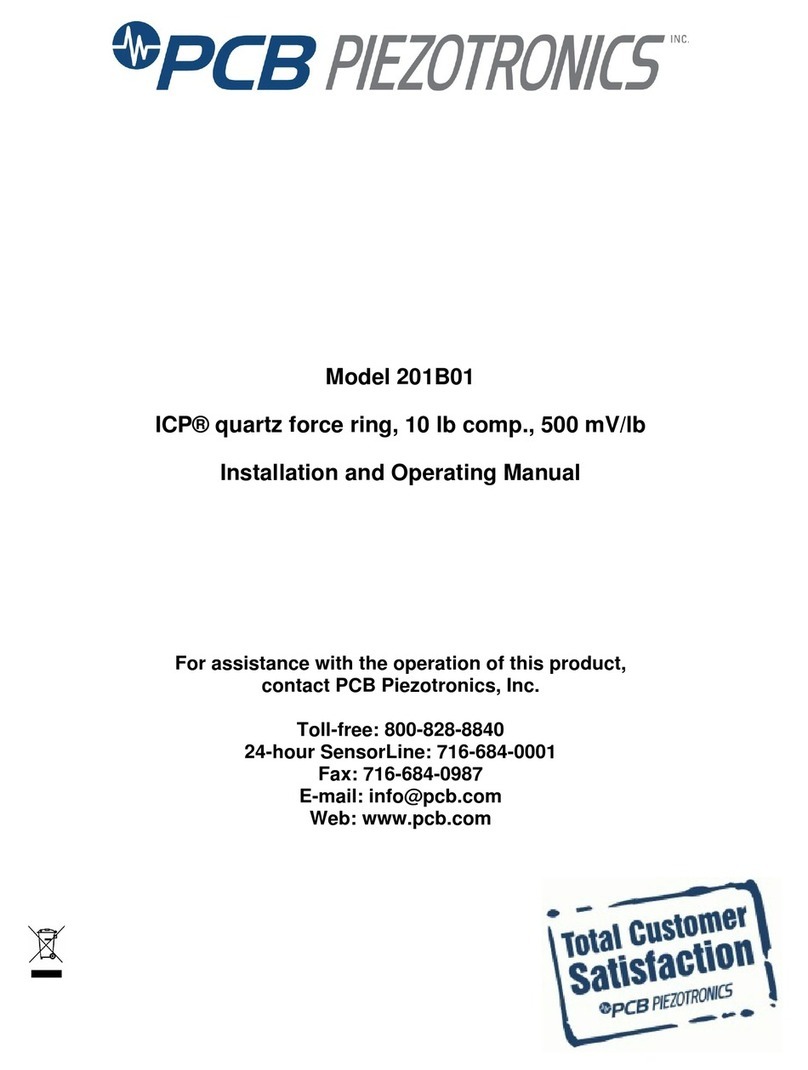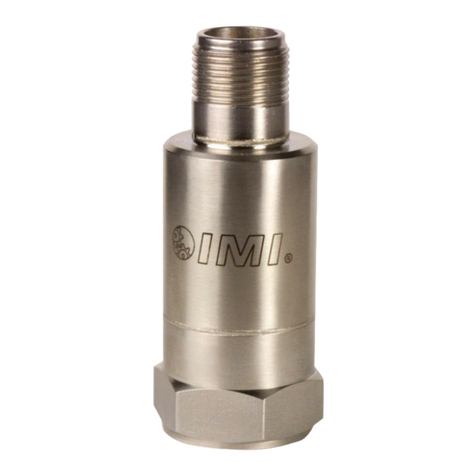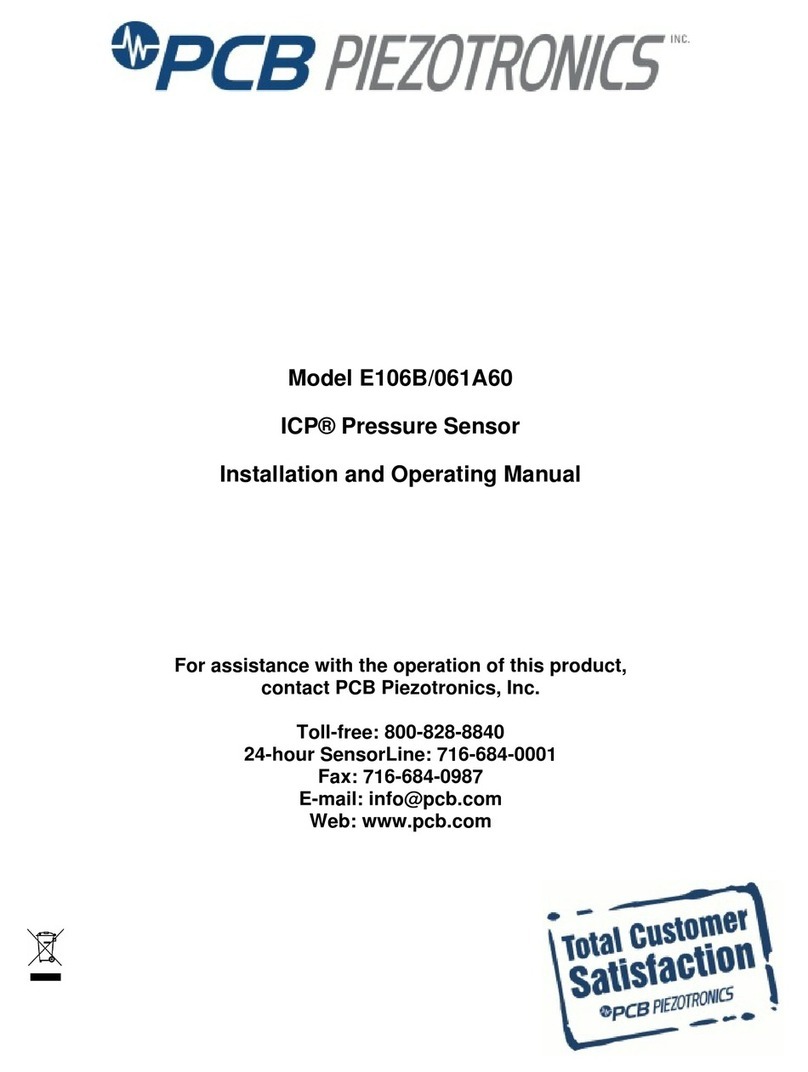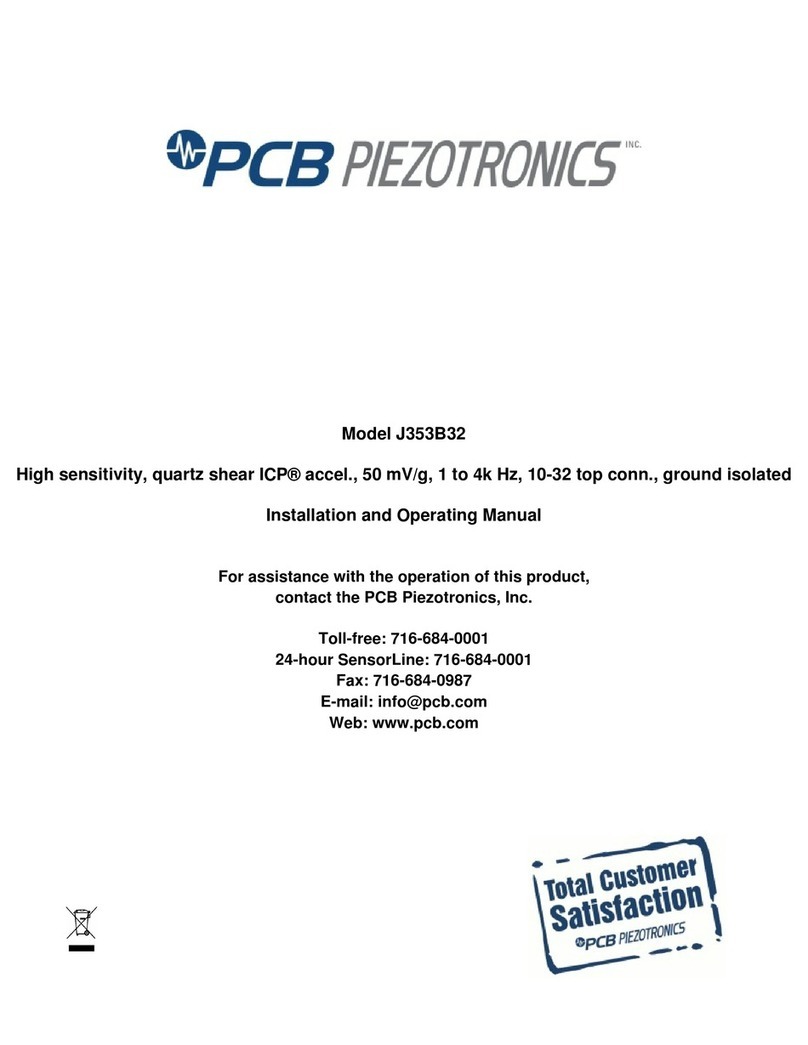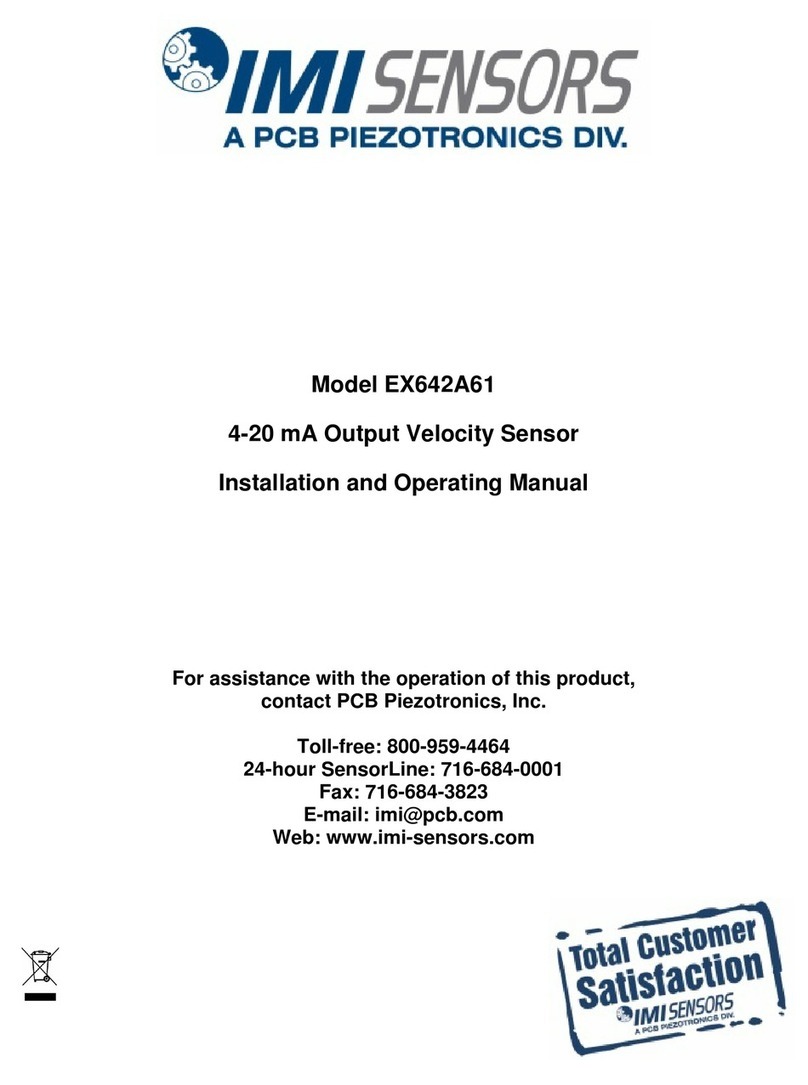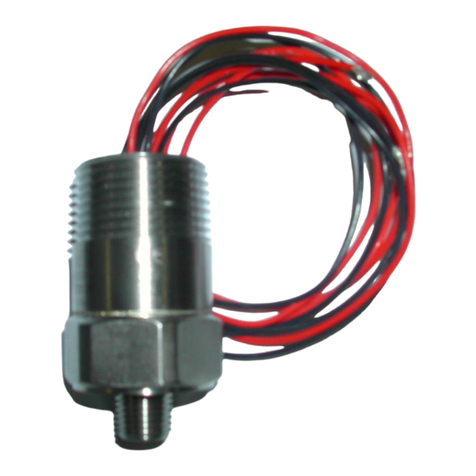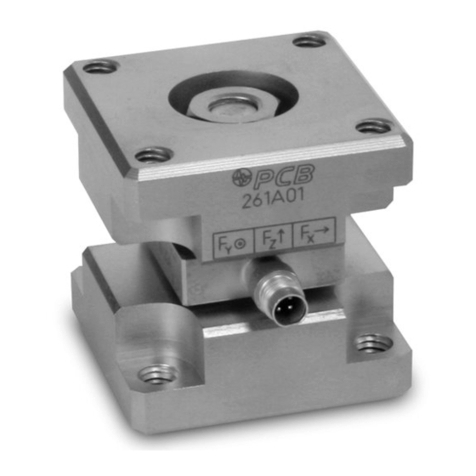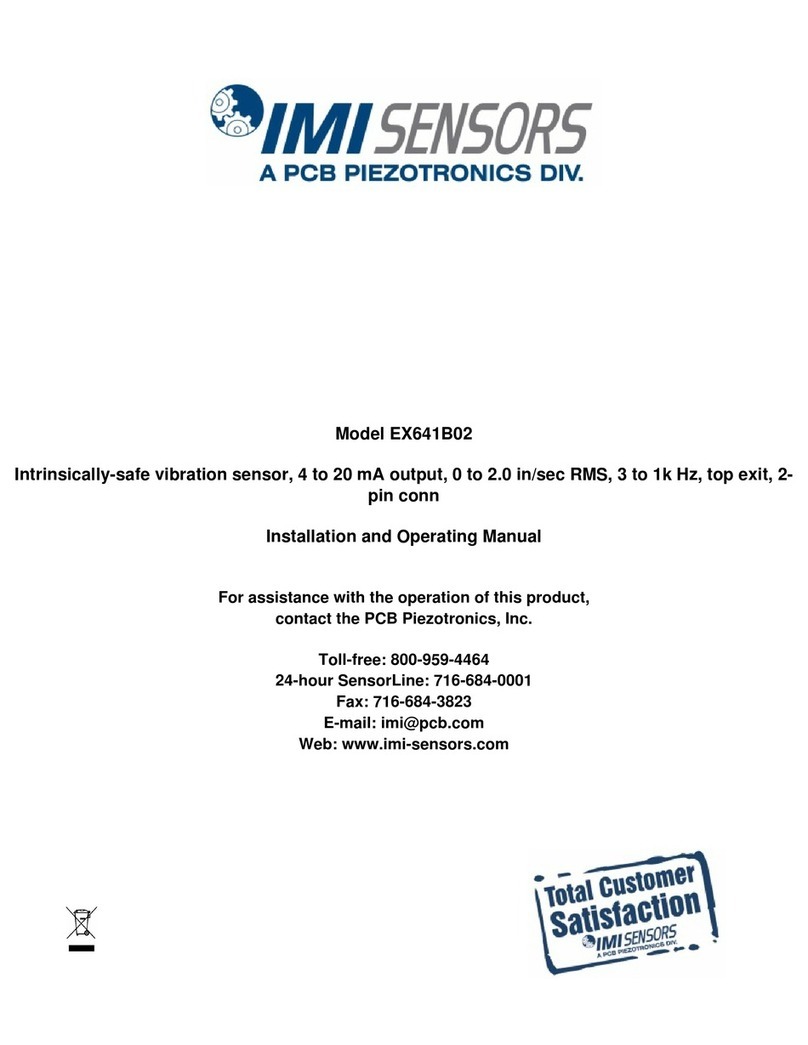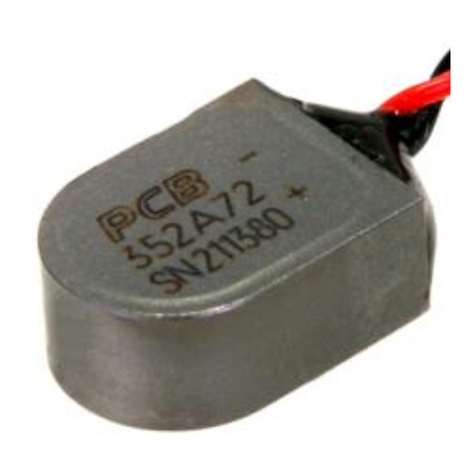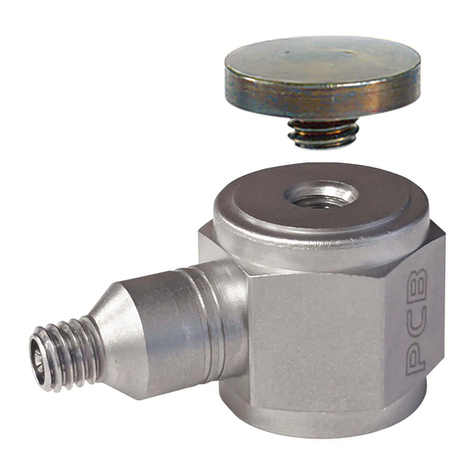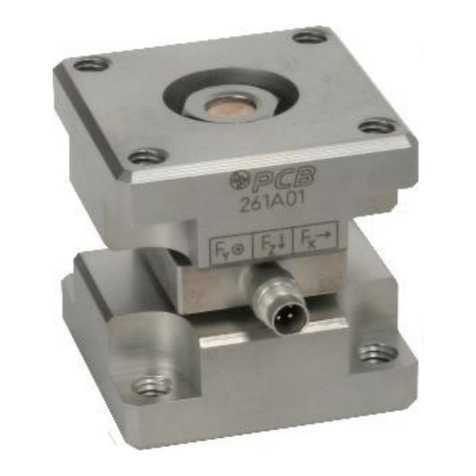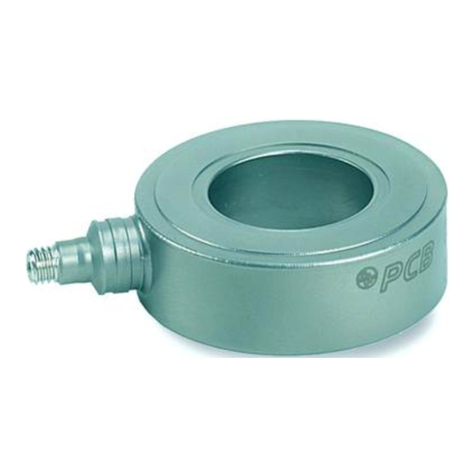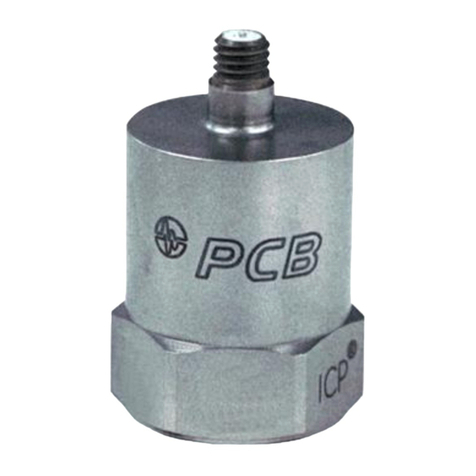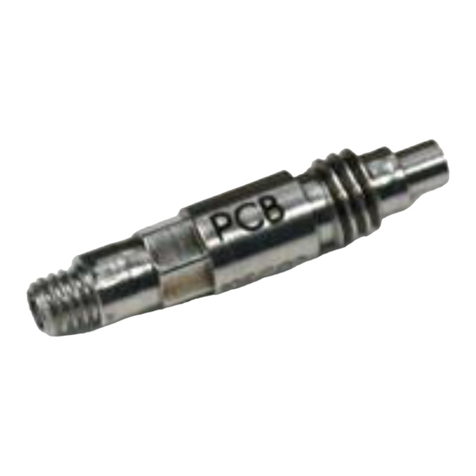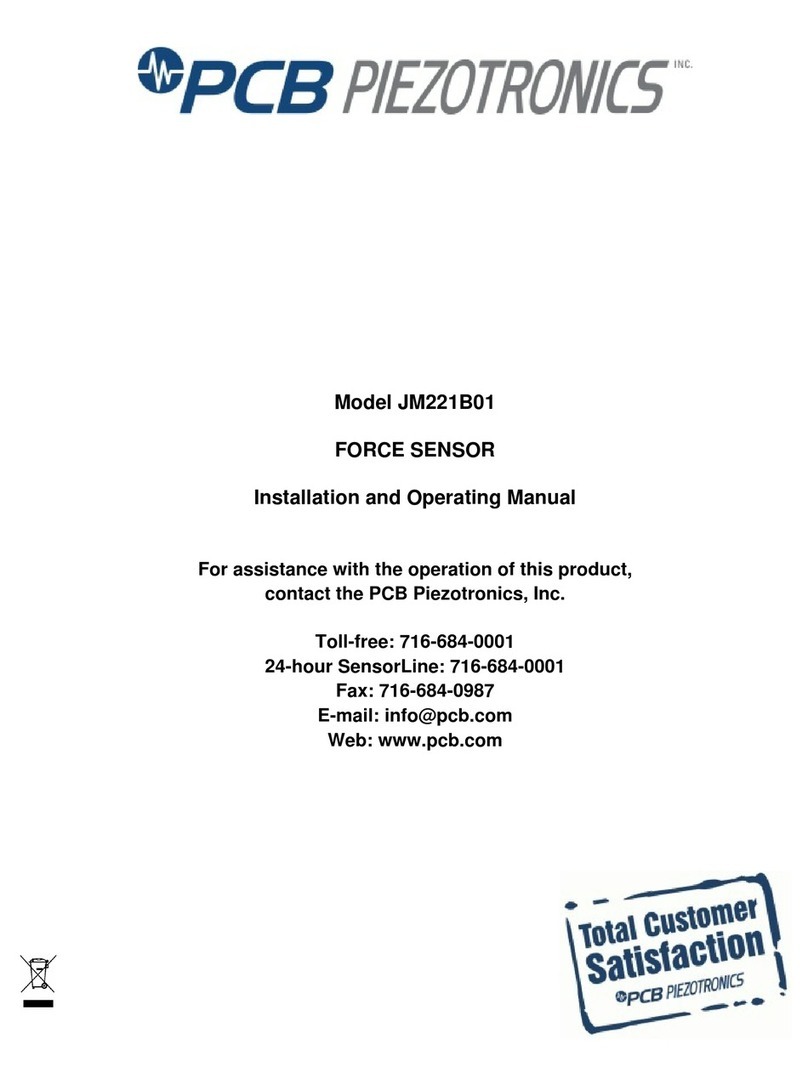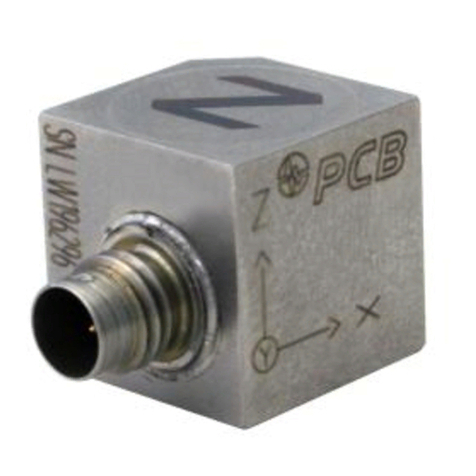
Drawing Number: 21091 ECO: 45804
Revision: A
OPERATION MANUAL FOR
HELIUM BLEED WATER-COOLED
PRESSURE SENSORS
Models 123A, 123A21, 123A22, 123A23, & 123A24
4.2 TIME CONSTANT
During in-place calibration static methods (dead
weight tester) may be used in a drift-free system by
placing the charge amplifier in "LONG TC" position.
However, during actual use, the TC mode switch
should be in "SHORT" position for two reasons.
Often times, the dynamic pressure being measured
exists superimposed upon a higher static level. The
short TC position will allow the effect of this static
level to zero out quickly without effect on the
dynamic level indicated.
Also, the influx of large amounts of thermal energy,
as in rocket combustion measurements, can cause the
sensor to generate spurious transient outputs of
considerable magnitude. Using the charge amplifier
on "SHORT" TC alleviates this problem by shunting
these longer term charge outputs to ground while
measuring the faster dynamic pressure pulses.
4.3 OPERATION - ICPMODELS
123A21, A22, A23, and A24
Consult Guide G-0001B for a complete description of
the low-impedance concept in instrumentation.
All PCB power units designed for ICPuse contain
built-in fault monitor meters to aid in locating circuit
faults (shorts or opens) and to identify normal
operation of the miniature impedance-converting
amplifier built into the sensor.
Do not attempt to apply voltage directly to the input
pin of the sensor from any other power source. The
input current must be limited to 20 mA maximum and
the input voltage must not be higher than 28 VDC.
Consult the factory if it is desired to build a power
unit rather than to use one of those available from
PCB.
The Models 123A21, A22, A23, and A24 are
identical except for sensitivity.
The Model 123A21 has a sensitivity of 20 mV/psi
which gives a full-scale range (for +5 V out) of 250
psi.
The Model 123A22 has a sensitivity of 1.0 (for +3 V
out) mV/psi and a full-scale range of 3000 psi.
The Model 123A23 has a sensitivity of 0.5 mV/psi
and a full-scale range of 10,000 psi.
The Model 123A24 has a sensitivity of 5.0 mV/psi
and a full-scale range of 1000 psi.
NOTE: Full-scale range is 1imited by the helium
source pressure. The helium source pressure must be
at least twice the peak combustion pressure (static
plus dynamic) to be measured, but not more than
about 10 times the lowest pressure. This is true for
all models, charge or ICP.
5.0 CALIBRATION
5.1 CHARGE MODEL 123A
To calibrate this model, install in pressure port of
dead weight tester and apply various static pressures,
recording corresponding outputs at each pressure of
interest.
Discharge the charge amplifier before each reading
and return pressure to zero before each new pressure
input. Use the charge amplifier on “LONG” time
constant and keep cables and connections clean to
avoid drift. A DC digital voltmeter is ideal for
readout during calibration.
NOTE: The helium tube must be plugged with a
pressure-tight seal before attempting to calibrate to
avoid losing pressure through the helium tube.
If a hydraulic calibration system is used, be sure to
remove all traces of oil from the diaphragm passage
after calibration. Pneumatic systems are preferred for
calibration.
5.2 ICPMODELS 123A21, A22, A23
& A24
Because of the shorter time constants built into these
models, static calibration methods are much more
difficult to use. Pressures must be applied rapidly
and readout must be made with fast recording devices
such as light beam oscillographs or storage
oscilloscopes.
A pneumatic (compressed air or hydrogen) system
with quick opening valve and reference gage is an
excellent method of calibrating these sensors.
